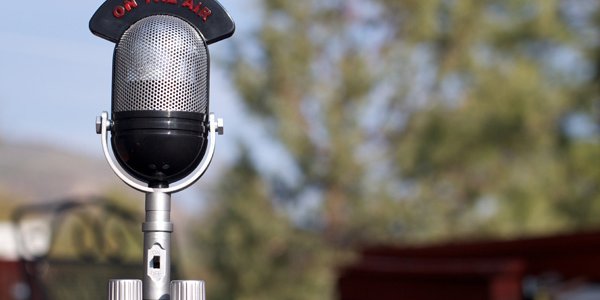A future classic? Turning newspapers into radio stations

This article was originally published on Media Shift Idea Lab.
You have an iPad edition, right? And your site is fully responsive -- on every device, every screen size? How about events? Are you doing events? We're making a lot from our dating service, too. Those guys over there are moving into publishing, one-click, straight into the e-book store. Naturally, we tried paywalls; now we're onto digital subscriptions and hybrid content bundles. Been doing data for ages, of course. Oh, and we just bought a drone.
Journalism's hunt for the silver revenue bullet is still on, and it's what makes the industry such an exciting place to be. However, innovation doesn't always have to be bleeding-edge. Sometimes a reappraisal and repositioning of classic ideas and mediums can go a long way towards engaging new audiences, developing your brand, and -- most importantly -- building sustainable new revenue models.
Take radio, for instance. February 13 is World Radio Day, so what better time to take a fresh look at this prestigious broadcast medium? Here at Sourcefabric we're finding ourselves fielding increasing amounts of inquiries on how newspapers and media organizations can start radio stations. High-profile examples like the Boston Globe's RadioBDC have inspired many, and we're partnering with organizations in places like Senegal, Georgia and Yemen that look and work like a newspaper, but see value in branching out into radio.
In certain environments, this makes perfect sense. African Media Development Initiative research undertaken in 2006 (download PDF) estimated that between 80% and 90% of African households had access to a working radio set. An increase in connectivity looks set to augment this reach, not diminish it. The web allows listeners to personalize their listening experience, access on-demand material, and engage with broadcasters like never before. Spoken word can be enriched with video and images, while frictionless sharing allows communities to talk to each other.
For those still doubting whether radio via the web has any impact, new statistics covered by MediaPost reveal some surprising things: "Interestingly, the results clearly show that while the majority of industry buzz is around streaming video, in all age groups analyzed, TV and Movies (individually and combined) were outstripped by the total reach of streaming Radio/Audio."
Sure, these figures also include Spotify and Pandora, but the potential is there. Of course, as with data, drones and dating sites, it's worth questioning whether everyone should be rushing to adopt radio. Here are five things to consider before plunging into the waves.
The wisdom of crowds
Who is your audience? Naturally, this should be the first question when considering moving into new territories of content distribution. Will you engage existing audiences in a new way or reach out to new content consumers? Consider also how broad you wish your broadcast to be. Try to compete with national broadcasters and you may have a hard time, but set your remit too narrow and you may exclude too many. Monocle 24, the radio service that now accompanies the British lifestyle magazine, is a good example -- it's not to everyone's tastes, but it focuses in on its market exactly, which in turn makes it attractive for advertisers.
A new avenue for revenue
Starting off a radio station offers exciting, new revenue possibilities. New advertisers attracted by the medium might just tempt existing ones to spend more money. Radio can be an intimate experience that print or apps often lack; the key is finding your angle and covering it exceptionally well. Offering mix-and-match packages that work across digital, print and audio can be more compelling than single-medium offers for both advertisers and readers. If you're doing well enough, you may even be able to sell or syndicate the content -- another potential income line.
Counting the cost
Radio used to be expensive. One needed a studio, a mixing board, an antennae, licenses and a full-time technician before broadcasting could even be considered. The web has changed all that. Indeed, we developed our Airtime software to bring many of those features into a browser interface and lower the barrier for entry. That said, a 24/7 station is still a big commitment. Consider how you can use the latest technological developments like live assist modes, smart playlists, and remote access to schedules to establish radio networks at a fraction of the cost, in a fraction of the time.
Radio: The original social media?
The potential for engagement with radio is huge -- from talkback to on-air messages, and from quizzes to call-ins, radio reaches people. The web powers up that engagement with hashtags and multimedia. Figuring out how you intend to capitalize on this isn't easy, but is vital to success. Don't be afraid to think differently on this one -- easily the most innovative models we've seen come from places like Sierra Leone and Kenya, where announcements are auctioned off to listeners, or mobile payment gateways can be used to crowdfund shows or reporting.
Create once, publish everywhere
As a media organization, your strength lies in your people, your expertise and your content. Are you already podcasting? If so, then the transition to a 24/7 radio broadcast is a simple one. Too many news websites record audio interviews only to hide them away in dusty, inaccessible web archives. Breathe fresh life into old content by getting it on air. Similarly, if you have news producers on the premises, then you are in a strong position to head down the hall, bring them to the microphone, and break news or offer context. Think about ways you can make the content you already produce work harder and travel further.
- Airtime 2.3.1 was released last week. For more information about this visit our Latest release page.
